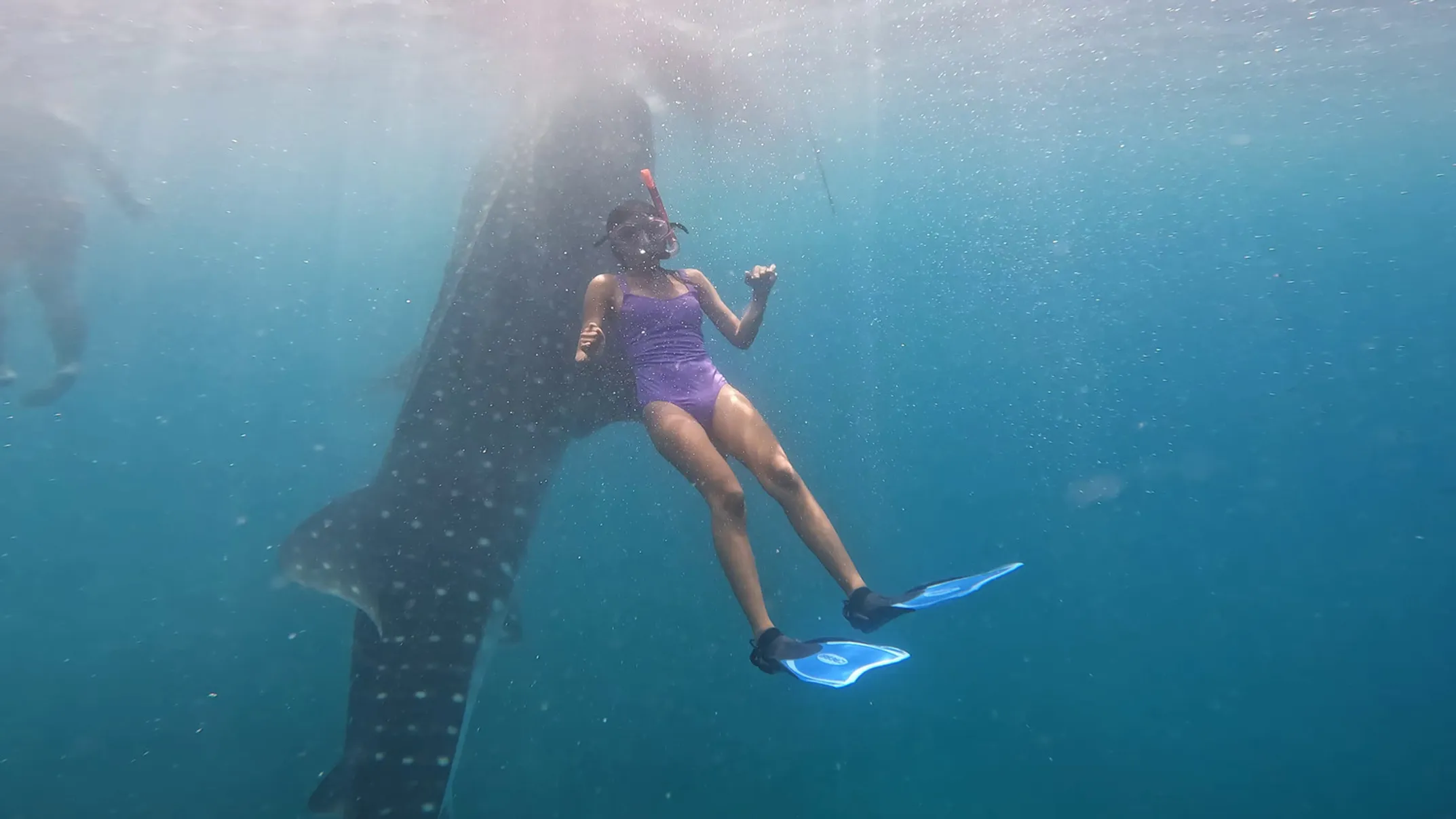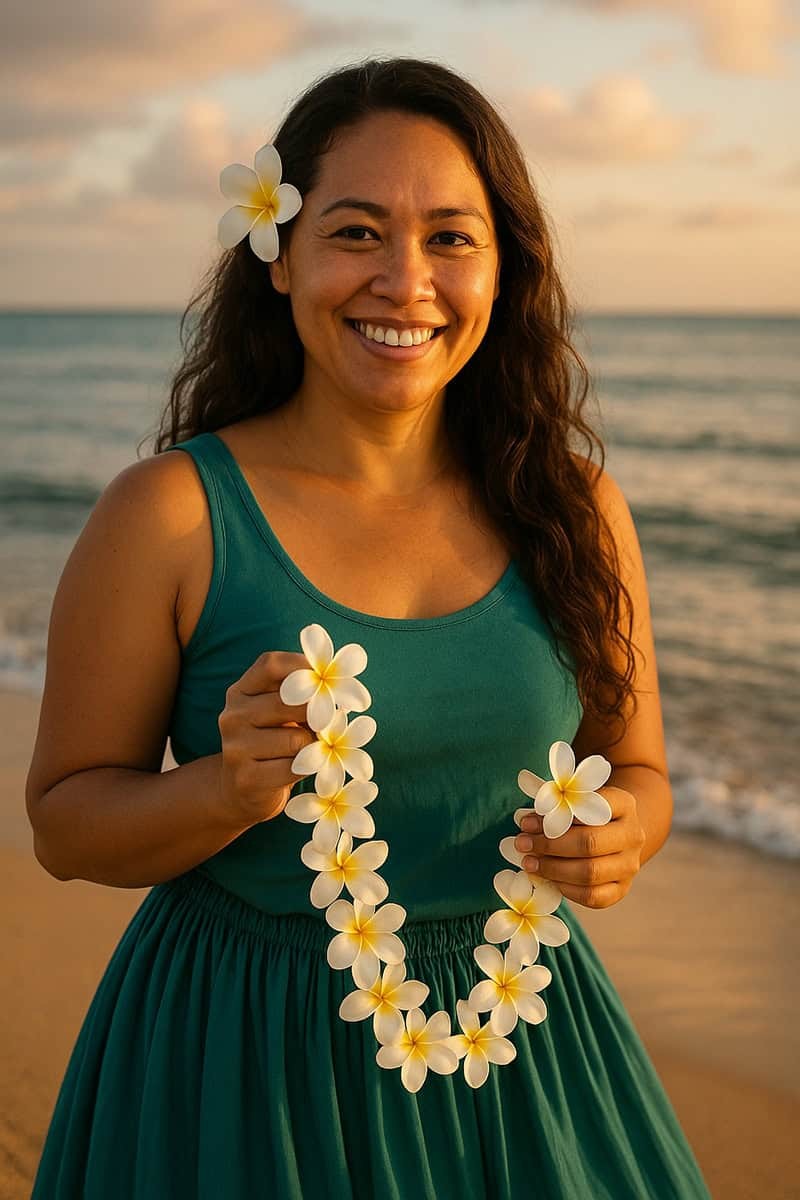

Ke Kai – The Call of the Water
Kona's Best Beaches, Snorkeling & Ocean Adventures

Written by a Local Expert
Leilani AkoThe Pacific is the Lifeblood of Kona
The Pacific is the lifeblood of Kona. It shapes our days, from the early morning paddles to the sunset surfs. It's where we find adventure, sustenance, and a deep spiritual connection.
Kona's Best Beaches: Sun, Sand, and Surf
Finding the "best" beach in Kona depends entirely on what you're looking for. Are you here to swim with your ʻohana, catch a wave, or find a secluded spot to read a book? Here's my breakdown of our best shores.
North Kona's Jewels (For Swimmers & Sunbathers)
The coastline north of Kailua-Kona is blessed with some of the island's most idyllic white-sand beaches.
Kua Bay (Maniniʻowali Beach)
If you have a picture in your mind of a perfect Hawaiian beach, it probably looks like Kua Bay. The sand is powdery white, and the water is a brilliant turquoise, backed by dramatic black lava rock. It's fantastic for swimming and boogie boarding when the waves are up. Because it's so beautiful and easy to get to, it's very popular. My local tip: the parking lot fills up fast, especially on weekends. Try to visit on a weekday or arrive before 9 AM to claim your spot.
Kūkiʻo Beach
Nestled near the Four Seasons Resort, Kūkiʻo offers beautifully calm water, making it a great choice for families with young children. What's unique here is the access; in Hawaiʻi, all shorelines are public, so you'll stop at the resort's guard gate, and they will direct you to the public parking area. It's a glimpse into a five-star world without the price tag, complete with excellent public facilities maintained by the resort.
Makalawena Beach
This is the adventurer's beach, and my personal favorite when I need to truly escape. "Māk" is not a beach you simply drive to; you earn it. The journey involves a slow drive down a rough, unpaved road and then a 40-minute hike across a lava field. Your reward is one of the most stunning and secluded stretches of sand on the island, a place that feels worlds away from everything. Pack everything you need, as there are no facilities here.
South Kona's Wonders (For Snorkelers)
The calmer, protected bays of South Kona are a paradise for underwater exploration.
Kahaluʻu Beach Park
This is the ultimate spot for beginner snorkelers and families. A breakwater, which moʻolelo (legend) says was built by the mischievous, super-strong little people called the menehune, creates a calm, protected area teeming with fish. You're almost guaranteed to see honu (green sea turtles) munching on seaweed. There are lifeguards on duty and even reef education specialists to answer your questions.
Honaunau Bay (Two Step)
For world-class snorkeling, look no further. There isn't a sandy beach here; instead, you enter the water from a smooth lava rock ledge that looks like two steps, which gives the spot its nickname. The water is incredibly clear, and the coral reefs are vibrant and full of life. Its location right next to the sacred Puʻuhonua o Hōnaunau National Historical Park makes for a powerful day of connecting with both Hawaiian nature and culture.
Leilani's Kona Beach Cheat Sheet
| Beach Name | Location | Best For | Amenities | Leilani's Insider Tip |
|---|---|---|---|---|
| Kua Bay (Maniniʻowali) | North Kona | Swimming, Body Surfing | Restrooms, Showers | Parking fills up by 10 AM. Go on a weekday or get there early. The north end is often calmer. |
| Kūkiʻo Beach | North Kona | Families, Calm Swimming | Restrooms, Showers | Access via Four Seasons gate. Parking is limited, so arrive early. A beautiful, paved jogging path runs along the shore. |
| Makalawena Beach | North Kona | Adventure, Seclusion | None | Requires a 4WD or a 40-minute hike. Your reward is a pristine, empty beach. Pack in/pack out everything. |
| Kahaluʻu Beach Park | South Kona | Beginner Snorkeling, Beginner Surfing | Restrooms, Showers, Lifeguards, Food Trucks | The best, safest place for kids and first-timers. Look for the menehune wall that protects the bay. |
| Honaunau Bay (Two Step) | South Kona | World-Class Snorkeling | Portable Toilets | No sand, just a lava rock entry. Unbeatable water clarity. Combine with a visit to Puʻuhonua o Hōnaunau next door. |
| Pine Trees (Kohanaiki) | North Kona | Intermediate Surfing, Camping | Restrooms, Showers, Camping (permit) | A consistent local break. Can get crowded on weekends. Watch out for the shallow reef. |
Continue Your Kona Journey
Ready to explore more of Kona? Discover the sacred sites and rich history that shaped these islands.
🏖️ Beach Essentials
- Best Time: Early morning
- Parking: Fills up fast
- Sunscreen: Reef-safe only
- Water Temp: 78-82°F
🤿 Snorkeling Gear
- Rent weekly for best rates
- Snorkel Bob's locations
- Prescription masks available
- Fins prevent coral damage
⚠️ Ocean Safety
- Never turn back on ocean
- Watch for rogue waves
- Don't touch coral or turtles
- Stay hydrated
📖 Kona Guide Navigation
Into the Deep: Unforgettable Ocean Adventures
Beyond the beaches, two ocean experiences define Kona for visitors and locals alike: exploring the sacred history of Kealakekua Bay and swimming with the gentle giants of the sea, the manta rays.
Snorkeling Kealakekua Bay, The Right Way
A trip to Kealakekua Bay is more than just a snorkel tour; it's a journey into a pivotal moment in Hawaiian history. The name itself, "Pathway to the Gods," hints at its significance. When Captain James Cook sailed into this bay in 1779, it was during the sacred Makahiki season, a time of peace and celebration dedicated to the god Lono. Cook's arrival, with his large ships and strange appearance, led many Hawaiians to believe he was Lono himself. This initial reverence eventually gave way to conflict, and it was here, in these very waters, that Cook was killed, marking a profound and permanent shift in the course of Hawaiian history.
Today, the bay is a protected marine sanctuary. The sheer cliffs that line the coast plunge dramatically underwater, creating a stunning wall of coral that's home to an incredible diversity of fish. Because access is difficult—either by a strenuous hike or by boat—the reef remains one of the most pristine in all of Hawaiʻi. Taking a boat tour is the best way to experience it.
Top-Rated Kealakekua Bay Snorkel Tours
| Operator | Boat Type | Vibe | Key Features |
|---|---|---|---|
| Fair Wind Cruises | Large Catamaran | Family Fun | Two 15-ft waterslides, dive platform, breakfast & lunch included, very stable. |
| Captain Cook Snorkel Cruises | 40' Vessel / 22' Catamaran | Small Group Adventure | Focus on dolphin watching and exploring the coast's sea caves and lava tubes. |
| Captain Zodiac / Sea Quest | Zodiac-style Raft | High-Speed Adventure | Quick, agile boats get you close to sea caves and blowholes; narrated by naturalist captains. |
Dancing with Giants: The Magic of the Manta Ray Night Snorkel
There are few experiences on Earth as magical as the manta ray night snorkel. But to truly appreciate it, you have to understand the cultural significance of these animals. In Hawaiian culture, the manta ray, or hāhālua, is sometimes considered an ʻaumakua—a deified ancestor, a family or personal guardian that takes an animal form. For families who hold the manta as their ʻaumakua, these creatures are protectors, guiding fishermen home or appearing in times of need. To see one is a powerful message from the ancestors.
The experience itself is a beautiful dance of science and nature. Tour boats head out after sunset to one of two main locations: "Manta Village" just outside Keauhou Bay, or "Manta Heaven" (also called Garden Eel Cove) near the airport. They shine powerful lights into the water, which attract swarms of plankton. The mantas, gentle giants that can have wingspans of over 12 feet, then glide in to feed, performing graceful, acrobatic somersaults just inches from your face. It's an encounter that many people describe as life-changing, a moment of profound connection with one of the ocean's most majestic creatures. When choosing a tour, look for operators with smaller groups and a strong focus on education and conservation; many have marine biologists on staff who share their knowledge and passion.
Remember: These are sacred animals in Hawaiian culture. Approach with respect, never touch or chase the mantas, and let them come to you. Your patience will be rewarded with one of the most incredible wildlife encounters on Earth.

